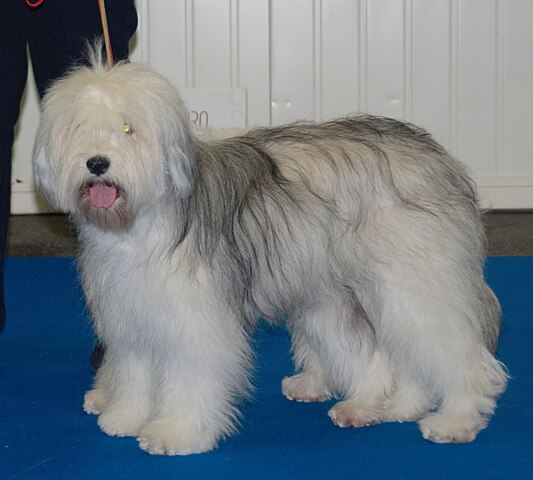The Lhasa Apso is a small breed with a lot of courage and spunk – originally used as a watchdog in the mountains of Tibet! These dogs have dignified temperaments, but when they are feeling silly, they will show their mischievous senses of humor. Aloof with strangers, the Lhasa’s true personality shines through when at home with the people whom they love! There is a certain “old wisdom” in the breed, combined with joy and love for life. These dogs are sensitive and extremely human-like in certain ways – each with its own individual personality.
The Lhasa Apso is very independent and cat-like, and doesn’t tend to worry too hard about pleasing his owner. This means that although the breed is sensitive and loving, he doesn’t necessarily see the point of obedience training. He can be trained… but it won’t come as naturally as other breeds. The Lhasas that have been trained successfully in agility, obedience and other dog sports were done so by owners that had a lot of patience and consistency. These factors are key to training the breed! It is also important to make the training fun, and to be mindful of manipulation tactics used by the dog. Lhasas that have zero rules or training are prone to “small dog syndrome” and will try to run the household. Remember their guardian background – these dogs are often fearless and take-charge leaders. Even though tiny, an untrained Lhasa Apso can be frustrating to live with.
Lhasas are only a moderately active breed, although as puppies they have a lot of energy. Their size makes them easy to keep in smaller living spaces such as apartments and they don’t require a lot of time outdoors. In addition, they don’t need much exercise, although many enjoy going on short excursions with their owners just for the joy of spending time with the people they love. Another perk for apartment dwellers – although this watchdog will bark at strange sounds, they often learn what constitutes “normal everyday sounds” and “unusual sounds” and will differentiate between the two. They aren’t apt to cause noise complaints.
Some owners find that housebreaking a Lhasa can be a slower process than with other breeds, partly because they take longer to mature. The slowness to mature does have a flip side, however. They are longer-lived than many other types of dogs. Living to 15 is very common, with some individuals living to 18 or even 20! Most older Lhasas don’t look their age, and generally stay very healthy throughout their lives. Another quick note about housebreaking… once fully housetrained, they aren’t the type of dog to ask to be let outside. They just assume that their owner will let them outdoors throughout the day. For some people, this can take some getting used to.
Their centuries-old watchdog abilities are still present, and most Lhasas are suspicious of new people coming into the house. It is vastly important to socialize this breed from a young age to keep this trait from turning into something bigger and more problematic. At its worst, some owners find that they cannot let anyone new into their house at all – and this can usually be stemmed to zero or no socialization of the dog. This suspiciousness of strangers is usually confined to the dog’s house and property, however. Most Lhasas do not have a problem meeting people outside of “their” territory.
The Lhasa Apso can get along with children if raised with them, although normally doesn’t seek them out. Most (but not all) will seek out the calmer, more mature adults to hang out with. Very young children, such as toddlers, are often too rough and don’t make the best companions for a Lhasa. The breed’s tiny size makes them delicate and easily hurt, and it is never fair to expose the dog to a situation where they can be injured. Lhasa Apsos are great for adults, however, and make particularly wonderful companions for people who work longer hours since they don’t crave constant human contact. As long as their basic needs are met (including a comfortable living area and toys to keep them busy), many are often fine with being alone. Separation anxiety is not common in the breed.
Grooming a Lhasa is a definite commitment! Unlike many breeds, their hair grows non-stop rather than reaching a set length and then ceasing to grow. This means that the coat will need to be kept brushed out on a very regular basis or it will tangle and form mats. Mats aren’t just unsightly – they can pinch the skin and become very painful to the dog if allowed to get bad. For this reason, a Lhasa needs to be brushed before tangles form – not after! Even dogs which are kept shaved will still need to be brushed (depending on the length of the shave). Dogs with a full (long) coat should never be brushed with a dry coat. Spritzing the coat with water or conditioning spray, or giving the dog a bath first, will keep the hair from breaking off when brushed. Full-coated Lhasas are often bathed and brushed out once a week.




